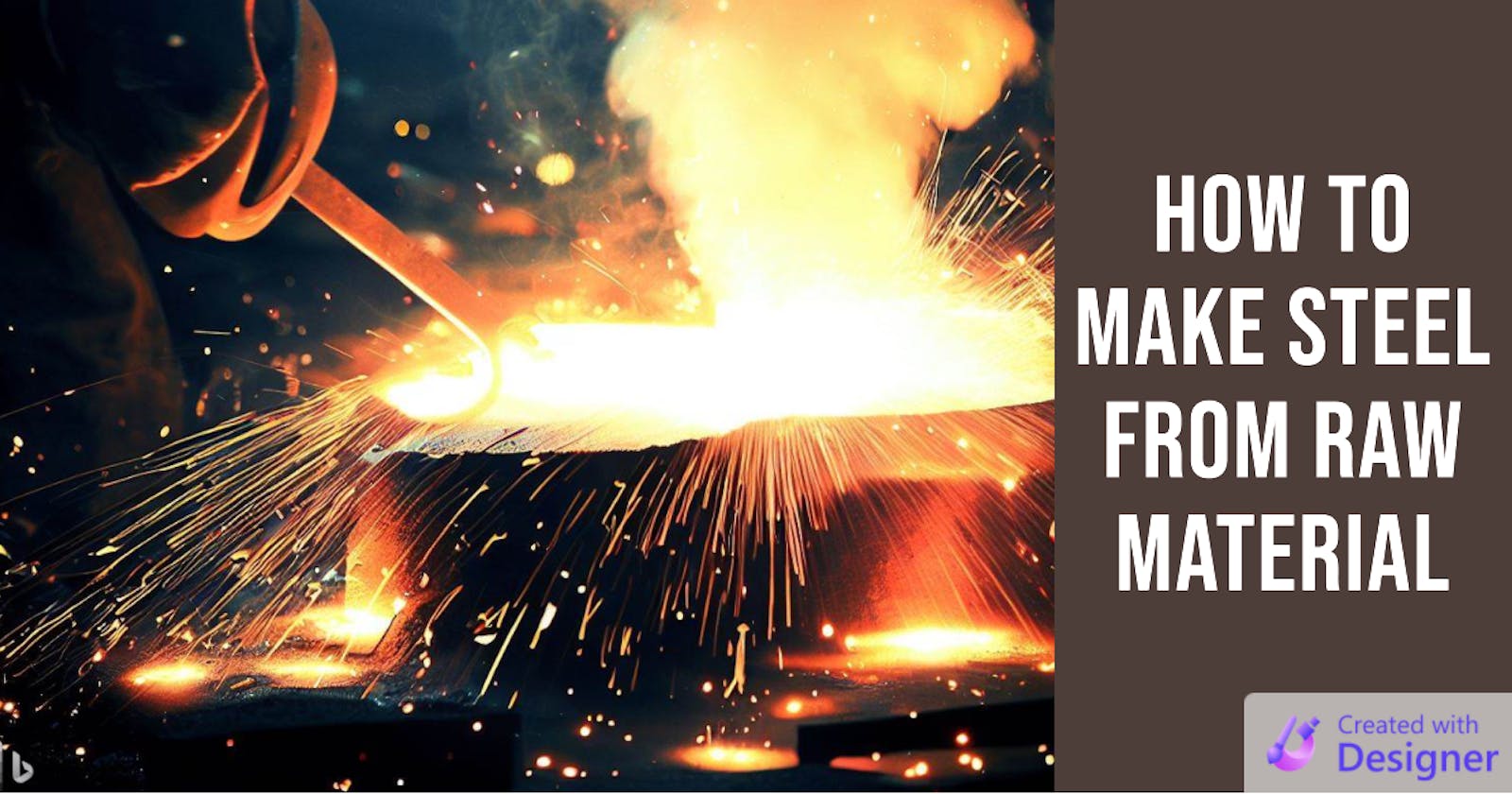Steel is one of the most widely used materials in the world, but how is it made from raw material? In this blog post, we will explain the step-by-step process of making steel from iron ore and other ingredients.
Step 1: Mining and Crushing
The first step in making steel is to mine and crush the iron ore, which is the main raw material for steel production. Iron ore is a type of rock that contains iron and other minerals. It is usually found in deposits near the surface of the earth, where it can be extracted by blasting, drilling, or digging.
The iron ore is then transported to a processing plant, where it is crushed into smaller pieces and separated from the waste rock. The crushed ore is then screened and sorted according to its size and quality. The high-grade ore, which contains more than 60% iron, is called hematite or direct reduced iron (DRI). The low-grade ore, which contains less than 60% iron, is called magnetite or taconite.
Step 2: Sintering and Pelletizing
The next step in making steel is to prepare the iron ore for the blast furnace, which is the main equipment for steelmaking. The blast furnace requires a uniform and consistent feed of iron ore, coke (a type of coal), and limestone (a type of rock that contains calcium carbonate).
To achieve this, the iron ore undergoes two processes: sintering and pelletizing. Sintering is a process of heating and compressing fine iron ore particles into larger lumps called sinter. Pelletizing is a process of rolling fine iron ore particles into small balls called pellets. Both sinter and pellets are then loaded onto trains or ships and transported to the blast furnace.
Step 3: Blast Furnace
The third step in making steel is to melt the iron ore in the blast furnace and convert it into pig iron, which is a crude form of iron that contains impurities such as carbon, silicon, sulfur, and phosphorus. The blast furnace is a tall cylindrical structure that consists of several zones: the top, where the raw materials are fed; the middle, where the combustion takes place; and the bottom, where the molten pig iron and slag (a by-product of ironmaking) are collected.
The blast furnace operates at a very high temperature of about 1500°C. The raw materials are fed from the top in layers of coke, sinter or pellets, and limestone. Hot air is blown from the bottom through pipes called tuyeres. The hot air reacts with the coke to produce carbon monoxide (CO), which rises up and reduces the iron oxide (Fe2O3) in the sinter or pellets to metallic iron (Fe). The limestone acts as a flux, which combines with the impurities in the iron ore to form slag.
The molten pig iron and slag are tapped from the bottom of the blast furnace at regular intervals. The pig iron is then transferred to a ladle or a torpedo car for further processing. The slag is either dumped or used for other purposes such as road construction or cement production.
Step 4: Basic Oxygen Furnace
The fourth step in making steel is to refine the pig iron into steel by removing most of the impurities such as carbon, silicon, sulphur, and phosphorus. This is done in a basic oxygen furnace (BOF), which is a pear-shaped vessel that can hold up to 300 tons of molten metal.
The BOF operates by blowing pure oxygen through a water-cooled lance into the molten pig iron. The oxygen reacts with the impurities in the pig iron to form oxides, which are then removed by slagging or gasification. The BOF also adds scrap steel (recycled steel) to dilute the carbon content of the pig iron. The BOF can produce steel with different grades and specifications by adjusting the amount and type of scrap steel and other additives such as manganese, nickel, chromium, etc.
The BOF process takes about 15 to 20 minutes to complete. The molten steel is then poured into a ladle for further refining or casting.
Step 5: Secondary Refining and Casting
The fifth step is to cast and shape the steel into various products. The steel can be cast into ingots or slabs, then rolled or forged into different shapes and sizes. The steel can also be cast into thin sheets or strips, which are then cut or coiled into various products. Some examples of steel products are beams, bars, rods, wires, pipes, plates, sheets, coils, etc.
The final step is to finish and coat the steel products. The steel products may undergo various finishing processes such as annealing (heating and cooling), quenching (rapid cooling), and tempering (heating and cooling again), etc. to improve their strength, hardness, ductility, etc. The steel products may also be coated with various materials such as zinc, tin, paint, etc. to protect them from corrosion or enhance their appearance.
These are the basic steps of making steel from raw materials. Of course, there are many variations and complexities involved in each step depending on the type and quality of steel required. However, this blog post should give you a general idea of how steel is made and what it takes to produce one of the most versatile and useful materials in the world.
